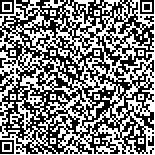| 摘要: |
| [目的]以新疆各地区为基本单元,对其农业机械化发展水平进行区划,为分类指导全疆各地区农机化发展提供依据。[方法]以2001~2014年统计数据作为数据源建立了农机化发展水平指标体系,并提出了指标标准值。构建了基于指标标准值、熵和变异系数的指标组合赋权法。依据此法,为各指标赋予权重,从而建立新疆2001~2014年14地区农机化发展水平关系数据模型。以各地州2001、2005、2010及2014年的农机化发展水平作为聚类样本,应用系统聚类法对其进行区划分析。[结果]从时间维度上, 4个年段新疆各地州农业机械化发展水平在簇间距离阀3.5、4.4、4.8和5.2条件下区划时,各划分区域农机化发展水平呈现出先高低分化,后趋同的态势。从空间维度上昌吉、巴州、塔城、博州和克拉玛依等5个地州农机化发展水平在不同的区划距离阀和时段内均显现为高度相似特征。[结论]以北疆为主的划分区域中相邻地区农机化发展水平聚集效应较明显。同时区划结果也揭示,乌鲁木齐、哈密、吐鲁番和喀什在4个区划年段中农机化发展水平的高度相似特征。其余各地区在研究年段内农机化发展水平聚集效应较弱。为不同地区农机化发展水平区划、农机化管理和服务政策的制定提供了参考。 |
| 关键词: 农业机械化发展水平 组合赋权 区划 时空格局 |
| DOI:10.7621/cjarrp.1005-9121.20170212 |
| 分类号: |
| 基金项目: |
|
| THE SPATIAL-TEMPORAL PATTERN OF THE DEVELOPMENT LEVEL OF AGRICULTURAL MECHANIZATION IN XINJIANG |
|
Tursun·Mamat, Xie Jianhua
|
|
School of Mechanical and Traffic Engineering, Xinjiang Agricultural University, Urumqi 830052, China
|
| Abstract: |
| Agricultural mechanization plays an important role in the development of modern agricultural in the last 3 decades. The development in agricultural mechanization varied with time due to the invention and adoption of new technologies. At the same time, farmer economic conditions, soil conditions, land distribution and government policies for specific region also play important roles in the development of agricultural mechanization. During the farm mechanization in Xinjiang in the Last decade, the different regions in south and north show different characteristics of development. So, the differentiation pattern of the development level of agricultural mechanization (DLAM) is considered as one of the significant factor for mechanization management. This paper is to plan the agricultural mechanization level of Xinjiang for guiding the development of the mechanization in other areas. The suitable regional DLAM index and standard value were proposed for agricultural mechanization level of Xinjiang based on the statistical yearbook and statistical annual report from 2001 to 2014. Then 14 regions of Xinjiang Urumqi, Karmay, Turpan, Kumul, Changji, Eli, Tarbaghatay, Altay, Bortala, Bazhou, Ahsu, Kezhou, Kashgharand Hotan were selected as sample, and the data model of DLAM for each district in Xinjiang was established by applying combination weighting method on the basis of standard value, entropy and the coefficient of variation. The DLAM data of each region in 2001, 2005, 2010 and 2014 was collected as sample and the regionalization was carried out by applying system clustering algorithm. The results showed that on the basis of time dimension, there was an emerging trend on DLAM of each region in same area, which shifted from higher to lower differentiation, due to the central′s subsidies and autonomous region′s support policy. By the space dimension, the similarity of DLAM was higher in Changji, Bazhou, Tarbaghatay and Bortala based on the different threshold and revealed aggregation effects in the northern Xinjiang. It concluded that there were highly similar DLAM features in Urumqi, Kumul, Kashghar, and Turpan, during the regionalization in 2001, 2005, 2010 and 2014. The aggregation effect was weak in the others six regions during the study period. The results can be taken as a reference to make different policies in the management of agricultural mechanization in Xinjiang. |
| Key words: DLAM combination weighting regionalization spatial-temporal pattern |

